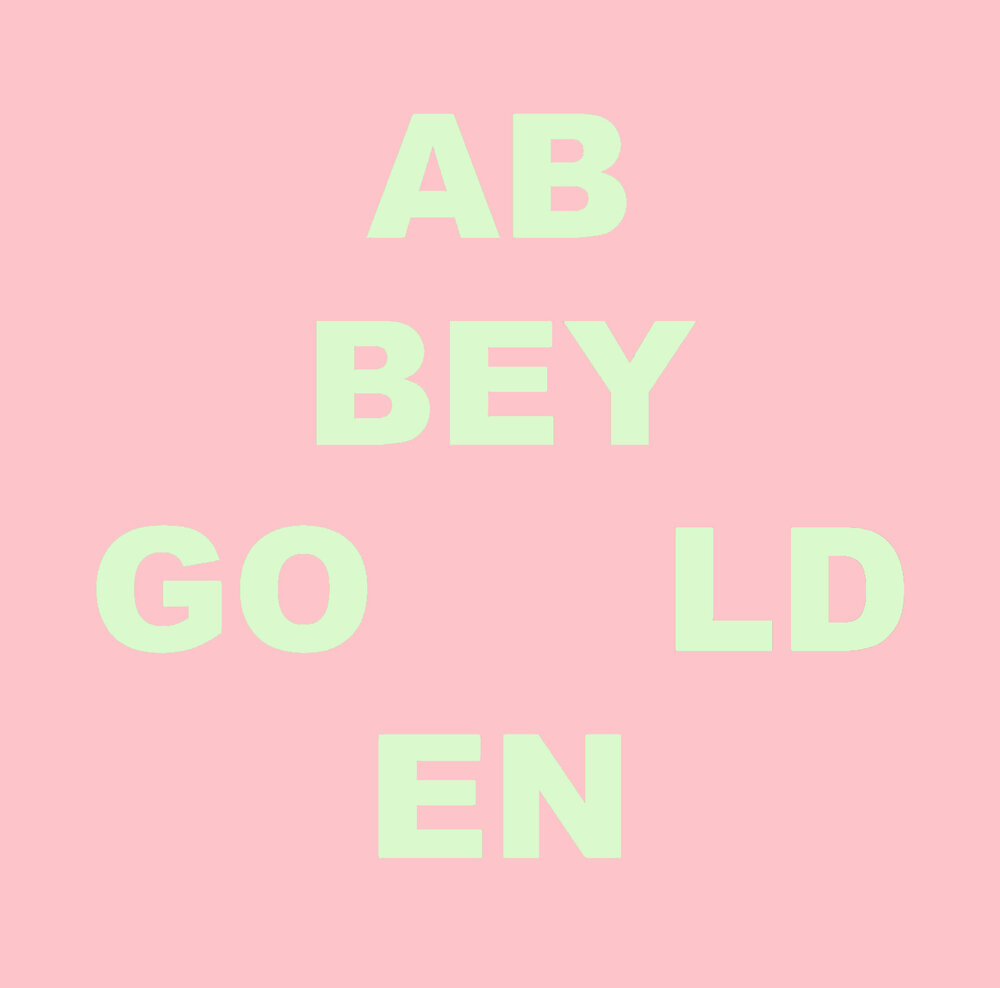ABBEY GOLDEN / GOLDEN AGE OF FLUIDITY
Essay by Cintra Wilson
Water, for Abbey Golden, is a liminal space — a quantum field of transformative possibility. Whereas in her previous series, “Golden Years,” the swimming pools of her parents’ retirement community and the visual distortions of bodies underwater were the vehicle by which Golden articulated her complex emotions surrounding her parents’ advancing frailty, the bodies of water in these new works are charged with identity politics, change, and a free-wheeling concupiscence.
“There’s a struggle with sexuality as part of my story. I’ve always identified as sexually fluid, but came of age in a rigid, binary time. Today’s youth can date anyone! It’s a Golden Age of Fluidity. It’s a beautiful thing, it’s a peak — dating whomever,” says the artist.
For Golden, whose paintings ache, throb, and gambol with the emotional nuances of her subjective experiences, studio practice during the Covid shutdown revealed a new time machine in her swimming pools.
“These works were made between 2020 and 2021, when I was pregnant with twins. They all have Covid on them,” says Golden, with her trademark drollery.
“When you become pregnant, everything you know about yourself changes. I gained 60 pounds. I let go of my Tom Boy physique. The only time I was comfortable was in a pool. So I would go to the community pool in LA and just float. These paintings capture this floating and connecting to my former self; thinking about past selves in the water, and obsessive crushes I used to have in somebody’s pool late at night.”
For Golden Age of Fluidity, Golden collected photographs of friends and advertisements, and allowed their characters to morph into vehicles by which she could recapture past thrills of unfettered sexual experimentation. “(The photos) all took on storylines during Covid, because I needed these past experiences to live through their bodies and expressions. I wanted to create sexual awakening moments through different characters which I made to capture feelings — shame and icky, sticky feelings of unrequited love.”
The bodies in these paintings themselves are fluid, beneath the steamy waterline; the eyes of her subjects are steeped in carnal yearning and hunger for connection. The colors are nostalgic, yet suggestive of a leisurely, endless vacation.
Golden’s ability to throw her own sexual adventurism into the faces of new, different people is a kind of psychic ventriloquism — the ability to respawn, and recapture emotional gems from deep memory through new agents of her own subjectivity.
In Suspended Belief, two women swimming at night, exalting in a realm of pure crush magic, there lurks the darker idea of giving too much of yourself, in love, to the point of self-abnegation - and the moth-to-flame attraction to this kind of romantic self-demolition. “The idea is that she left her skin,” says Golden. “She left everything of herself on the side to be there for this other person.” This is what it feels like to be in that kind of love — the desire for total immersion, and within that, total self-erasure.
In Big Bather and Terribly Dull, oversize figures sit in small bodies of water that they appear to have uncomfortably outgrown. “It’s feeling bigger than your surroundings,” Golden explains. “Finding a gay community in my 20’s was great, but then it got in the way of moving on and evolving. In terms of identity and fluidity, there’s an attachment to identity that you need to let go of as a means of survival. I identify as queer. But then I met a man and married him. It’s a real release of your identity to find your place in the world.”
In Around the Bend, the water, charged by Golden with various mystical powers, appears to climb a vertical wall, creating a new dimension. It is the counterpoint to Overgrown, in which a still pool, devoid of bodies — a little private oasis — seems to unravel as nature reclaims its territory. In Diver, wherein a woman seems to be flying underwater, the subject has become so absorbed as to be one with her context — her limbs trail off into reflected clouds, bringing to mind the “little death” of orgasm.
The dappling of sunspots (another magical territory for Golden) in The Sitter seems to once again revisit the concept of decline, both mental and physical: age spots, as it were. “The sitter is an older woman. It was important for me to include both ethnic diversity and age diversity,” says Golden, with an effortless instinct for ‘wokeness.’ “You can feel her age. Our bodies are constantly changing until the day we die.”
Golden’s strengths in this series are her own fluidities — her empathy, which enables her to throw her feelings, her non-binary sexuality, and her egalitarianism into new floating bodies.
“Water takes the figure and cuts it up and jumbles and splices it in this beautiful, moving patterned way. Cut and disfigured, cut in with all this blue. The water is constantly changing. Some of it is transparent, some is choppy. It plays as an amazing instrument to disfigure something we’re all so familiar with… When a body is in water, it sings to me like a choir.”


































